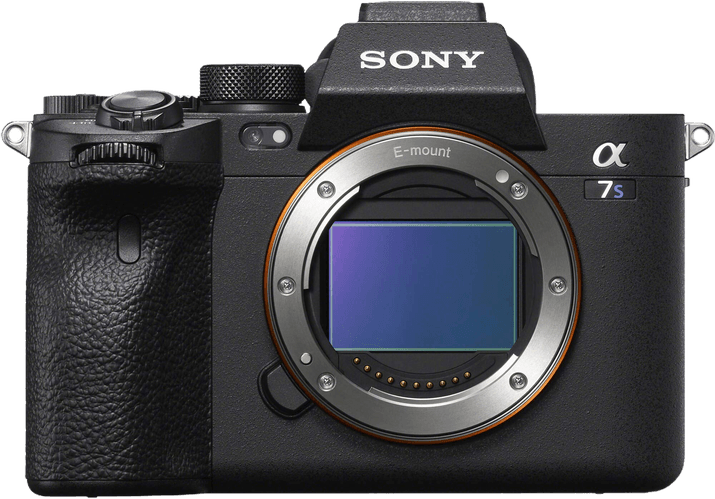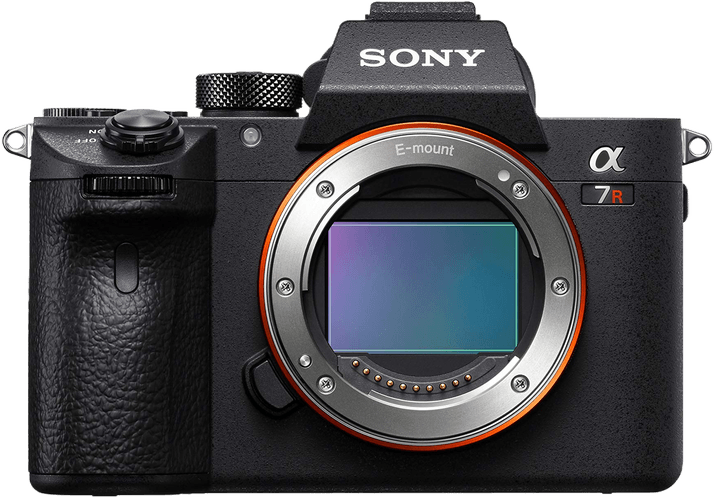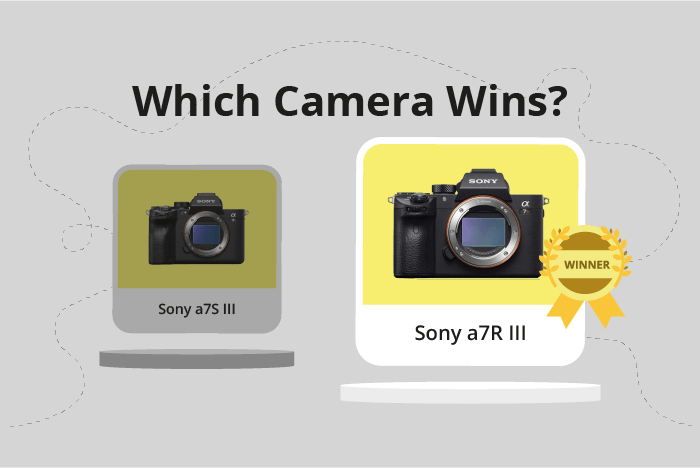Sony a7S III vs a7R III Comparison
Sony a7S III

Sony a7R III

The Sony a7R III takes the lead with a score of 83/100, compared to the Sony a7S III at 74/100. Both mirrorless cameras share similarities in their announcement years (2017 and 2020) and launch prices ($3,200 and $3,499). The two cameras also have comparable sizes and weights, with the a7R III being slightly lighter and smaller.
The winning a7R III camera excels in image quality and performance, making it a top choice for professional photographers. On the other hand, the a7S III camera shines in its video capabilities, catering to the needs of videographers and filmmakers.
Although the a7R III has a higher score, the a7S III still holds its ground in specific areas. Choosing between these two cameras ultimately depends on the user’s priorities and intended use. Regardless, both cameras are excellent options within the Sony lineup.
Sony a7S III vs a7R III Overview and Optics
The Sony a7R III emerges as the winner in optics with a score of 84/100, while the Sony a7S III scores 69/100. Both cameras share several specifications, such as a 10 fps shooting speed, CMOS sensor type, Full Frame sensor size, Sony FE lens mount, and image stabilization.
The a7R III’s superiority in optics comes from its higher megapixel count of 42.4, compared to the a7S III’s 12.1 megapixels. This difference allows the a7R III to capture more detailed images, making it an ideal choice for photographers who require high-resolution photos. Additionally, the a7R III boasts a higher DXOMARK sensor score of 100, compared to the a7S III’s score of 86. This indicates that the a7R III’s sensor performs better in terms of color depth, dynamic range, and low-light performance.
The a7S III, on the other hand, has a more advanced Bionz XR processor compared to the a7R III’s Bionz X processor. This contributes to better overall performance and faster image processing. However, this advantage may not be significant enough to outweigh the benefits offered by the a7R III in terms of optics.
In terms of optics, the Sony a7R III is the clear winner due to its higher megapixel count and superior sensor performance. The a7S III’s advantage in processing power is not sufficient to surpass the a7R III’s optical capabilities. Therefore, photographers seeking high-resolution images and better sensor performance should opt for the Sony a7R III, while those prioritizing processing speed may find the a7S III more suitable.
Sony a7S III vs a7R III Video Performance
The Sony a7S III emerges as the superior camera for video capabilities, scoring 77 out of 100, while the Sony a7R III lags behind at 56 points. Both cameras share some common specifications, such as a maximum video resolution of 4K and dimensions of 3840 x 2160. Neither camera has built-in time-lapse functionality.
The a7S III outperforms the a7R III in video frame rate, offering a maximum of 120fps compared to the a7R III’s 30fps. This significant difference allows the a7S III to capture smoother, more detailed slow-motion footage, making it a better choice for videographers or those frequently shooting action-packed scenes.
On the other hand, the a7R III has no specific video advantages over the a7S III, as both cameras possess the same video resolution and lack time-lapse functionality. Therefore, the a7R III does not excel in video capabilities when compared to the a7S III.
Considering the video capabilities of both cameras, it is clear that the Sony a7S III is the better choice for those prioritizing video performance, due to its higher score and superior frame rate. The Sony a7R III, although offering the same 4K resolution, falls short in terms of frame rate and does not provide any unique advantages in video capabilities.
Sony a7S III vs a7R III Features and Benefits
The Sony a7S III and Sony a7R III both achieve a feature score of 83 out of 100, indicating no clear winner in terms of features. They share several specifications, including a 3-inch screen size, 1,440,000-dot screen resolution, touchscreen capabilities, flip screens, and the absence of GPS. Additionally, both cameras offer Wi-Fi and Bluetooth connectivity.
Despite the identical feature scores, there are areas in which each camera excels. The Sony a7S III is superior in low-light performance and video capabilities, making it an ideal choice for videographers and those shooting in challenging lighting conditions. Its impressive high ISO performance and advanced autofocus system ensure sharp, noise-free images and smooth video recording.
On the other hand, the Sony a7R III stands out for its high-resolution 42.4-megapixel sensor, which captures more detail and allows for large prints and extensive cropping. This makes it a better option for photographers who prioritize image quality, such as landscape, portrait, and commercial photographers.
While both cameras offer a robust set of features, the choice between the Sony a7S III and a7R III ultimately depends on the specific needs of the user. The a7S III is the better choice for low-light and video work, while the a7R III excels in capturing high-resolution images. Regardless of the choice, both cameras deliver excellent performance and are worthy additions to any photographer’s arsenal.
Sony a7S III vs a7R III Storage and Battery
The Sony a7S III outperforms the Sony a7R III in storage and battery with a score of 76/100, compared to the latter’s 65/100. Both cameras share common specifications, such as two memory card slots, compatibility with SD/SDHC/SDXC (UHS-II) cards, and the same battery type, NP-FZ100.
The a7S III has an advantage with its support for CFexpress Type A cards, allowing for faster storage performance. Additionally, it offers USB charging, providing extra convenience for on-the-go photographers.
On the other hand, the a7R III has a slightly longer battery life of 650 shots, compared to the a7S III’s 600 shots. However, it lacks USB charging capability.
Taking these factors into consideration, the Sony a7S III proves to be the better option in terms of storage and battery, with its added features and usability. The a7R III, while having a marginally longer battery life, falls short in other aspects.
Alternatives to the Sony a7S III and a7R III
Are you still undecided about which camera is right for you? Have a look at these popular comparisons that feature the Sony a7S III or the Sony a7R III:

